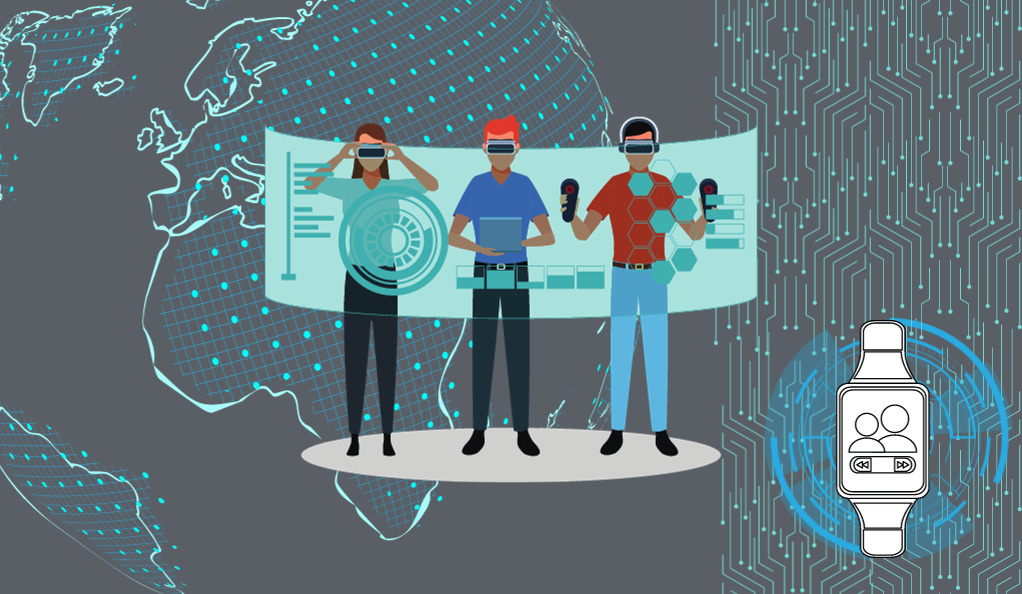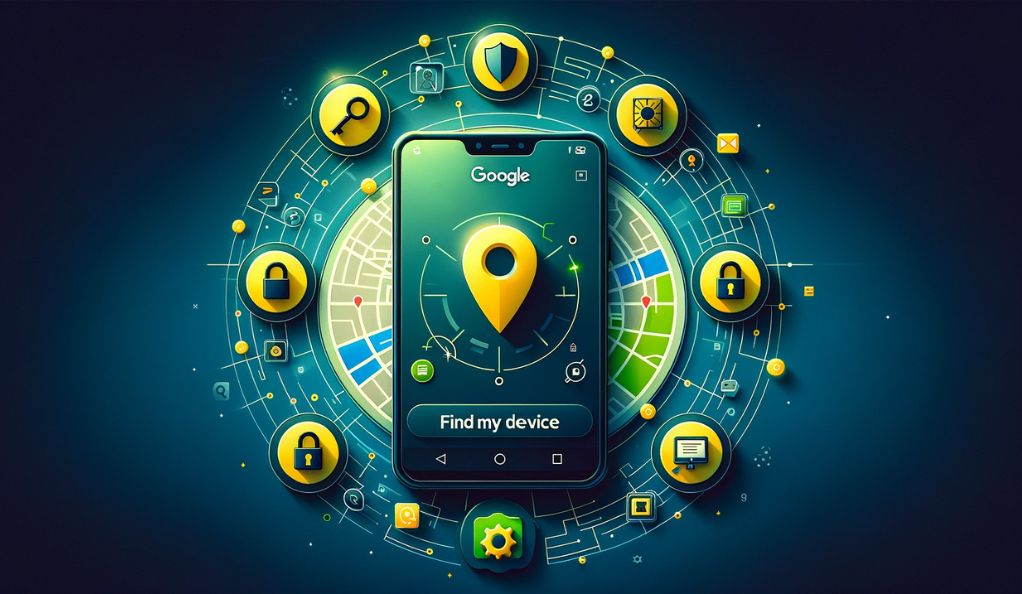In the realm of technological evolution, wearable technology stands out as one of the most transformative and rapidly growing sectors. From the rudimentary calculator watches of the 1980s to today’s sophisticated smartwatches and fitness trackers, wearable devices have seamlessly integrated into our daily lives, offering a blend of convenience, functionality, and style.
A Brief History of Wearable Tech
The concept of wearable technology isn’t as modern as one might think. In the 1500s, German inventor Peter Henlein created small watches that were worn as necklaces. By the late 1600s, wristwatches, primarily worn by women, made their debut. The 1970s saw the emergence of calculator watches, which reached peak popularity in the following decade. Fast forward to the early 2000s, and wearable cameras became part of the growing sousveillance movement. By 2010, Fitbit released its first step counter, marking the beginning of the modern era of wearable tech.
Common Types of Wearable Technology
While the term “wearable technology” encompasses a broad range of devices, a few categories dominate the market:
- Smartwatches: These devices, like the Apple Watch or Samsung Galaxy Watch, offer a combination of traditional timekeeping with advanced features such as fitness tracking, notifications, and even cellular connectivity.
- Fitness Trackers: Devices like Fitbit or Garmin primarily focus on health and fitness metrics, including steps taken, heart rate, sleep patterns, and more.
- Smart Glasses: Google Glass introduced the concept of head-mounted displays, overlaying digital information in the user’s field of vision.
- E-Textiles: These are fabrics embedded with electronics, sensors, and connectivity, paving the way for smart clothing.
The Rise of Smartwatches and Fitness Trackers
The 21st century has witnessed an unprecedented surge in the adoption of smartwatches and fitness trackers. These devices, once considered novelties, have now become indispensable tools for many, aiding in everything from health monitoring to productivity enhancement.
Popularity and Adoption Rate
According to recent market research, the global wearable market is expected to reach over $100 billion by 2023. A significant chunk of this growth can be attributed to smartwatches and fitness trackers. The reasons for their soaring popularity are manifold:
- Health and Fitness Monitoring: These devices offer real-time tracking of various health metrics, such as heart rate, sleep patterns, and physical activity levels. This data empowers users to make informed decisions about their health and well-being.
- Convenience: With features like notifications, GPS, and even mobile payments, wearables have become an extension of our smartphones, allowing us to stay connected without constantly reaching for our phones.
- Fashion and Personalization: Modern wearables are not just functional; they’re also fashionable. Brands offer a plethora of design options, and users can customize watch faces or tracker displays to match their personal style.
Features and Functionalities
The capabilities of smartwatches and fitness trackers have expanded dramatically over the years. Some of the standout features include:
- Health Monitoring: Advanced sensors can detect irregular heart rhythms, measure blood oxygen levels, and even provide electrocardiogram (ECG) readings.
- Fitness Training: Beyond counting steps, these devices offer guided workouts, track specific exercises, and monitor performance metrics like VO2 max.
- Sleep Analysis: Detailed sleep tracking provides insights into sleep duration, quality, and disturbances, helping users optimize their sleep routines.
- Smart Notifications: From calls and texts to app notifications, wearables ensure you’re always in the loop.
- Integration with Other Devices: Many wearables can be paired with other smart devices, such as home automation systems, allowing for seamless control right from your wrist.
The Intersection of Wearables and the Internet of Things (IoT)
As we navigate the digital age, the lines between distinct technological devices are becoming increasingly blurred. Wearable technology is no exception, as it finds itself at the crossroads with another significant technological trend: the Internet of Things (IoT).

How Wearables Fit into the IoT Ecosystem
The Internet of Things refers to the network of physical devices, vehicles, appliances, and other items embedded with sensors, software, and other technologies, all interconnected through the internet. Wearables, with their built-in sensors and constant connectivity, naturally fit into this vast ecosystem.
- Data Exchange: Wearables continuously collect data, which can be shared with other IoT devices. For instance, a fitness tracker might communicate with a smart thermostat to adjust room temperature based on the user’s body temperature.
- Remote Control: Some wearables can control other IoT devices. A smartwatch, for example, might be used to dim the lights or lock the doors in a smart home setup.
- Enhanced User Experience: The integration of wearables with the broader IoT landscape can lead to more personalized user experiences. Imagine a scenario where your smart refrigerator suggests a hydration-focused diet based on the dehydration levels detected by your fitness tracker.
Data Exchange and Connectivity
The true power of wearables in the IoT space lies in their ability to exchange data seamlessly. This data flow can be categorized as:
- Device-to-Device (D2D): Direct communication between two devices, like a smartwatch sending heart rate data to a smartphone.
- Device-to-Cloud (D2C): Wearables sending data to cloud servers for analysis, storage, or further distribution. This is common in health-focused wearables that provide detailed analytics via dedicated apps.
- Device-to-Gateway (D2G): Data sent from wearables to a gateway device (like a smartphone or a home hub) which then communicates with other devices or the cloud.
Data Collection: A Double-Edged Sword
The allure of wearable technology largely stems from its ability to gather and analyze data in real-time. This continuous stream of information, ranging from our physical activities to our sleep patterns, offers unprecedented insights into our health and well-being. However, as with many technological advancements, this boon comes with its own set of challenges.
The Types of Data Collected by Wearables
Wearable devices are equipped with a myriad of sensors, each designed to capture specific types of data:
- Physical Activity: Steps taken, distance traveled, floors climbed, and calories burned.
- Vital Signs: Heart rate, blood pressure, blood oxygen levels, and respiratory rate.
- Sleep Metrics: Duration, sleep stages (light, deep, REM), and disturbances.
- Environmental Data: Altitude, temperature, and UV exposure.
- Location: GPS data pinpointing the user’s location and movement patterns.
The Benefits of Data Collection for Health and Fitness
The primary allure of wearables is the promise of a healthier, more informed lifestyle. The data these devices collect plays a pivotal role in realizing this promise:
- Personalized Health Insights: Wearables offer a tailored health overview, allowing users to understand their unique physiological responses and needs.
- Goal Setting and Achievement: With real-time feedback, users can set tangible fitness goals and track their progress.
- Early Warning Signs: Advanced wearables can detect irregularities in vital signs, potentially alerting users to health issues before they become severe.
- Integration with Medical Care: Some wearables can share data with healthcare providers, ensuring timely interventions and personalized care.
Security Concerns in Wearable Tech
As wearable technology continues to permeate our daily lives, the security of these devices and the data they collect becomes paramount. The very features that make wearables convenient and insightful also render them vulnerable to a host of security threats.

Potential Vulnerabilities and Threats
- Data Interception: As wearables transmit data to other devices or the cloud, there’s a risk of this data being intercepted by malicious actors, especially if the transmission isn’t encrypted.
- Physical Theft: Given their portable nature, wearables can easily be stolen, granting thieves access to sensitive data.
- Malware and Ransomware: Just like computers and smartphones, wearables are susceptible to malware attacks that can compromise device functionality or lock users out until a ransom is paid.
- Unauthorized Access: If wearables aren’t adequately protected, they can be accessed without permission, leading to data breaches or misuse.
- Location Tracking: With GPS capabilities, malicious actors can track a user’s movements, leading to potential privacy invasions or even physical threats.
Real-world Incidents and Breaches
Several incidents highlight the security vulnerabilities in wearable tech:
- Fitness Tracker Heat Maps: In 2018, a fitness tracking app inadvertently revealed the locations of secret military bases by displaying user activity heat maps.
- Smartwatch Eavesdropping: Certain smartwatch models were found to have security flaws that allowed attackers to listen in on conversations or even communicate with the wearer.
- Ransomware Attacks: Some wearables have been targeted by ransomware, with attackers demanding payment to unlock the device.
These incidents underscore the pressing need for robust security measures in wearable tech, both from manufacturers and end-users.
The Role of Manufacturers and Developers
To ensure the security of wearables:
- Regular Updates: Manufacturers should release regular software updates to patch known vulnerabilities.
- End-to-End Encryption: Data transmission should be encrypted to prevent interception.
- Multi-Factor Authentication: Users should be required to authenticate their identity using multiple methods before accessing sensitive data.
User Responsibility
End-users also play a crucial role in ensuring their wearables are secure:
- Regularly Update Software: Always install the latest updates to benefit from the most recent security patches.
- Use Strong Passwords: Avoid easily guessable passwords and change them regularly.
- Be Wary of Third-party Apps: Only download apps from trusted sources and be cautious of granting them access to wearable data.
The Privacy Debate: How Much Data is Too Much?
As wearable technology continues to evolve, so does the conversation around the ethics of data collection and privacy. While these devices offer unprecedented insights into our health, habits, and routines, they also raise questions about the boundaries of personal privacy in the digital age.
Concerns about Personal Data Privacy
- Data Ownership: Who truly owns the data collected by wearables? Is it the user, the device manufacturer, or the app developer? The ambiguity surrounding data ownership can lead to misuse or unauthorized sharing.
- Data Monetization: Some companies may sell user data to third parties, often without explicit consent. This data can be used for targeted advertising, market research, or even insurance profiling.
- Surveillance and Profiling: Continuous data collection can be used to profile users based on their habits, preferences, and routines. This can lead to targeted marketing, but also more sinister uses like surveillance or discrimination.
- Data Breaches: Even if a company has the best intentions, they might not have the best security. Personal data can be exposed in breaches, leading to potential misuse by malicious actors.
The Balance between Convenience and Privacy
While the benefits of wearables are undeniable, they come at the potential cost of personal privacy. Users often face a dilemma:
- Opting In for Better Services: Many wearable features require access to personal data. For instance, to get accurate health insights, a user might need to share data about their physical activity, heart rate, and sleep patterns.
- Opting Out to Protect Privacy: On the other hand, users can choose to limit data sharing, but this might render certain features of the wearable useless or less accurate.
Best Practices for Ensuring Data Privacy
For those looking to strike a balance:
- Read Privacy Policies: Before using a wearable or associated app, always read the privacy policy to understand how your data will be used.
- Limit Data Sharing: Only provide data that you’re comfortable sharing. If a feature doesn’t seem essential, consider if it’s worth the potential privacy trade-off.
- Use Pseudonyms: Instead of using your real name, consider using a pseudonym or alias, making it harder to directly link data to your identity.
- Regularly Review Permissions: Periodically check and update the permissions granted to apps and services connected to your wearable.
Best Practices for Ensuring Wearable Tech Security

As the adoption of wearable technology continues to soar, ensuring the security and privacy of these devices becomes paramount. Both manufacturers and end-users play crucial roles in safeguarding the vast amounts of data generated daily. Here, we’ll explore actionable recommendations for both parties to bolster the security of wearable tech.
Recommendations for Manufacturers and Developers
- Robust Encryption: All data, whether at rest or in transit, should be encrypted using the latest cryptographic standards. This ensures that even if data is intercepted, it remains unintelligible to unauthorized parties.
- Regular Security Audits: Manufacturers should conduct periodic security audits to identify and rectify potential vulnerabilities in their devices and software.
- Transparent Privacy Policies: Clear and concise privacy policies should be provided, detailing exactly how user data is collected, stored, and used. Any changes to these policies should be communicated promptly to users.
- Data Minimization: Only collect data that is essential for the device’s functionality. Reducing the amount of data stored reduces the potential impact of a breach.
- Secure APIs: If wearables interface with third-party apps or services, ensure that these APIs (Application Programming Interfaces) are secure and grant limited access.
Tips for Consumers to Protect Their Data
- Stay Updated: Always keep the software on your wearable devices up-to-date. Manufacturers often release updates that patch known security vulnerabilities.
- Two-Factor Authentication: Where available, enable two-factor authentication. This adds an additional layer of security, requiring a second form of verification beyond just a password.
- Be Cautious with Third-party Apps: Only download and connect apps from trusted sources. Check reviews and ratings, and be wary of apps that request excessive permissions.
- Backup Data: Regularly backup data from your wearable device. In case of device loss or malfunction, you won’t lose your valuable information.
- Factory Reset Before Disposal: If you decide to sell, recycle, or dispose of your wearable, ensure you perform a factory reset. This will erase all personal data from the device.
The Role of Regulatory Bodies
Governments and regulatory bodies also play a role in ensuring the security of wearable tech. By setting stringent standards and regulations, they can compel manufacturers to prioritize user security and privacy. Consumers should be aware of their rights under these regulations and be proactive in holding companies accountable.
The Future of Wearable Tech: Opportunities and Challenges
Wearable technology is poised for significant advancements. Soon, wearables will play integral roles in medical diagnostics and treatments, while also offering immersive AR and VR experiences. Sustainability and eco-friendly designs will become standard, and AI-driven insights will enhance user experiences. However, these innovations bring challenges, especially around security and privacy. A unified approach to security, user education, and transparent data practices will be essential.
Conclusion
As wearable technology evolves, the balance between innovation and responsible use will be crucial. Embracing the future requires both excitement for the potential and caution for the challenges ahead.







